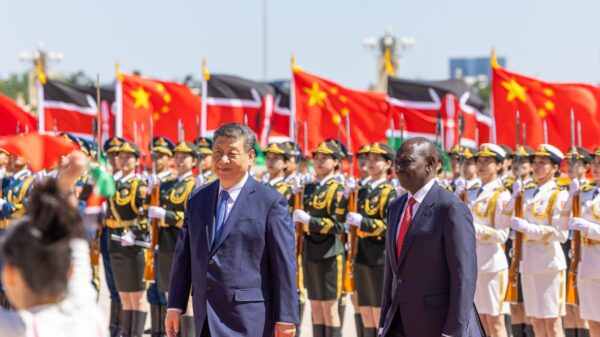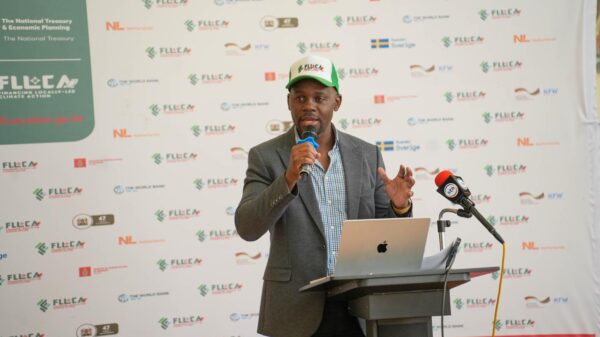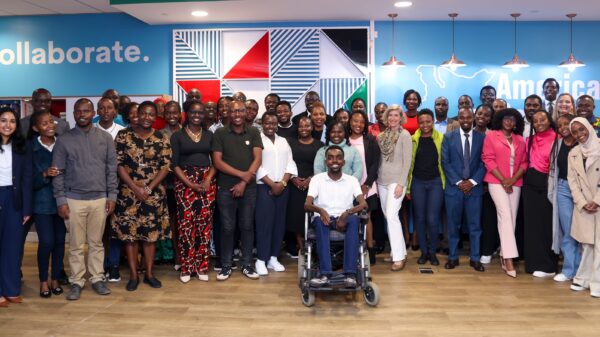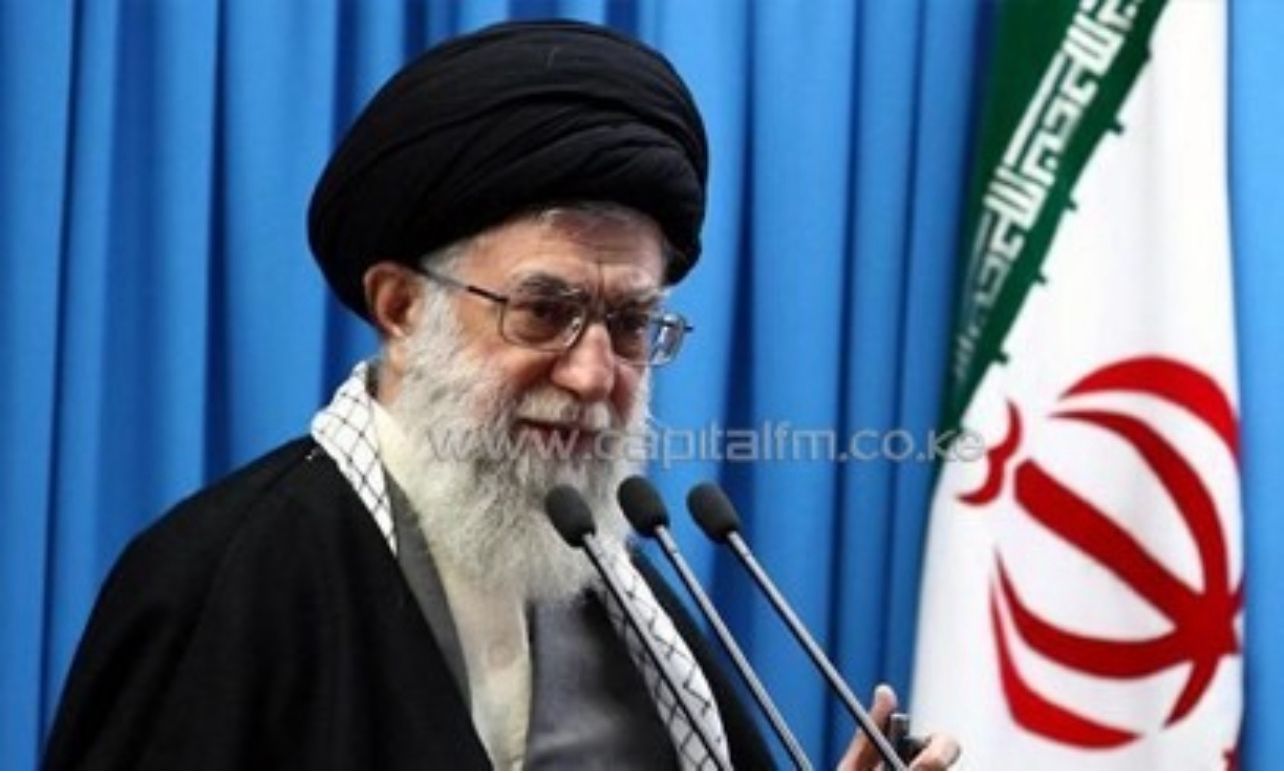TEHRAN, June 18 (Xinhua) — Iran’s Supreme Leader Ali Khamenei said on Wednesday that the country remains steadfast amid its conflict with Israel and will not surrender to anyone amid pressure, according to the Tasnim news agency.
In a televised address, Khamenei praised the “steadfast, courageous, and timely” response of the Iranian people to what he called “the foolish and malicious aggression” of Israel. He said the nation’s resilience reflected “the growth of rationality and spirituality” in the country. “The Iranian nation stands firm against an imposed war, just as it will stand firm against an imposed peace. This nation will not surrender to anyone under pressure,” Tasnim quoted Khamenei as saying. Khamenei also warned that any American military intervention would cause “irreparable damage.” “Those who know Iran and its history understand that threatening this nation is futile,” he said. Khamenei’s remarks followed a series of social media posts from U.S. President DonaldTrump on Tuesday, in which he demanded Iran’s “UNCONDITIONAL SURRENDER!” and appeared to suggest targeting Khamenei personally. The posts fueled speculation that Trump could involve the U.S. military in the conflict. The aerial conflict between Israel and Iran has entered its sixth day, with nearly 600 killed in Iran and 24 in Israel. The escalation began after Israel launched surprise airstrikes across Iran on June 13.
G7 summit ends in disputes
CALGARY, Canada, June 18 (Xinhua) — The Group of Seven (G7) summit wrapped up in Canada on Tuesday with no joint communique but some stark frictions.
Several statements, or the leaders’ commitments, were issued after the summit, which included driving secure, responsible and trustworthy AI adoption across public and private sectors, powering AI now and into the future, and closing digital divides; boosting cooperation to unlock the full potential of quantum technology to grow economies, solve global challenges and keep communities secure. The attendees also committed to mounting a multilateral effort to better prevent, fight and recover from wildfires, which are on the rise around the world; protecting the rights of everyone in society, and the fundamental principle of state sovereignty, by continuing to combat foreign interference, with a focus on transnational repression; and countering migrant smuggling by dismantling transnational organized crime groups.
In his final remarks at the closing news conference, Canadian Prime Minister Mark Carney said that the discussions over the past two days were marked by a range of differing opinions, frank conversations and strategic exchanges. “There is a great amount of direct dialogue and discussion, very frank exchanges, very strategic exchanges, differences of opinion on a number of issues, but an effort to find common solutions to some of these problems,” said Carney, also chair of this year’s summit. He said this is particularly valuable “at a time when multilateralism is under great strain.” There was no joint statement on Ukraine, although Carney announced new Canadian support for Ukraine’s defense and another set of sanctions on Russia. Carney invited Ukrainian President Volodymyr Zelensky to attend the event in person and made support for the country one of the summit’s key discussion topics on Tuesday. Leaders met for the final day of the summit in Kananaskis in Canada’s province of Alberta without U.S. President Donald Trump, who suddenly left Canada on Monday night, saying that escalations in the Middle East forced his early exit from the G7 event.
As he left, the summit published a statement that the resolution of the Iranian crisis can lead to a broader de-escalation of hostilities in the Middle East, even a ceasefire in Gaza. The remaining G7 leaders had a working lunch with visiting non-G7 leaders on energy security. In the statement, the leaders said that they remain vigilant to the implications of the Iran-Israel aerial conflict for international energy markets and that they will stand ready to coordinate to safeguard market stability. Hundreds of protesters took to the streets in downtown Calgary and Banff during the summit, calling on the summit to address a variety of issues, including Trump’s threat to annex Canada. Originally scheduled to begin on the weekend, the summit was shortened to two days and officially started on Monday. French President Emmanuel Macron announced Tuesday that next year’s summit will take place in Evian, a French spa town known for its mineral water. The G7 is an informal bloc comprising seven of the world’s advanced economies — Canada, France, Germany, Italy, Japan, Britain and the United States — along with the European Union.
Israel ramps up airstrikes on Iran as cross-border attacks enter sixth day
JERUSALEM, June 18 (Xinhua) — Israel carried out fresh waves of airstrikes in Iran on Wednesday, with the Israeli military saying it was targeting nuclear-related facilities and weapons sites, as the aerial conflict between the two countries entered its sixth day following an Israeli surprise attack.
In the morning, around 25 Israeli fighter jets struck more than 40 military targets in western Iran, including missile infrastructure, weapons storage sites, and personnel linked to the Iranian regime, the Israeli military said in a statement. It added that overnight, Israeli aircraft struck an Emad-type missile launcher that was loaded and ready to launch toward Israeli territory. Israeli warplanes continued to operate in Iranian airspace throughout the day, identifying and striking targets, including five Iranian AH-1 attack helicopters at a military base in the Kermanshah area. The helicopters were reportedly intended to intercept Israeli aircraft, the military said. More than 50 aircraft took part in an additional strike targeting Iran’s nuclear and missile programs, including a centrifuge production facility used to accelerate uranium enrichment, and sites producing components for surface-to-surface and surface-to-air missiles. “The strikes are part of the broad effort to operate against Iran’s nuclear weapons development project,” the military said.
Israeli military spokesman Effie Defrin said on Wednesday that Israeli forces had struck more than 1,100 targets in Iran in hundreds of sorties since the attacks began early Friday. “We have delivered significant blows to the Iranian regime. They have been pushed back into central Iran and are now focusing their efforts on launching missile fire from the Isfahan area,” Defrin said in a video posted on X. Israel accuses Iran of seeking nuclear weapons through uranium enrichment, a charge Tehran denies, insisting its nuclear program is for peaceful purposes. Overnight, Iran launched two missile barrages at Israel, triggering air raid sirens across the country and sending millions to shelters. Security officials said several missiles were intercepted, while others sparked fires. There were no reports of casualties, according to emergency services. Seven Iranian drones were intercepted over the Israeli-occupied Golan Heights, with no injuries reported. The current hostilities began with Israeli airstrikes on Iran on June 13. Nearly 600 people have been killed in Iran and 24 in Israel since the fighting erupted, according to official figures.
News Analysis: When AI out-writes writers, can human creativity survive?
BEIJING, Jun 18 (Xinhua) — At the 2025 Lijiang River Literary Award ceremony in south China’s Guilin City, Liu Chuxin, a research assistant at the Hubei Academy of Social Sciences, stood on stage, clutching the trophy for his novel “Ni Tan,” or literally “Mud Pit.” His voice cracked with emotion.
As he recounted the personal tale of his 20-year literary journey, he spoke of his late girlfriend, who had died of cancer. She left him a final letter — an aching plea to turn his grief into a masterpiece. He shared something she had once said to him: “In life, we experience many pains, but when we look back, they are all legends.” Her memory and his words resonated with the audience.The young writer’s emotional speech was not merely a celebration of a personal success born of pain, but perhaps also, unknowingly, a reflection of a profound shift underway in the world of creation. His story, rooted in grief and human experience, stood in quiet contrast to the emotionless output of artificial intelligence — a force that, despite feeling no joy, sorrow, or loss, is now seemingly beginning to out-write, out-create, and out-imagine human beings.
A month before this speech, another literary figure, the famed science fiction author Liu Cixin, shared his own disquiet at the pace of AI’s creative advancements.Speaking at a reading promotion event in April 2025, Liu, whose “Three-Body Problem” trilogy has become a global sci-fi phenomenon, admitted that his creative spark had waned in recent years. He confessed, “The inspiration and drive to write that once surged within me are becoming increasingly rare.” For Liu, who has been lauded for his visionary worlds, this sense of creative stagnation was no abstract worry — it was profoundly felt. “The bottleneck I face now is a constant,” he said. “It’s like searching for meteorites in the vast, barren Gobi Desert — I simply can’t find the kind of inspiration that once excited and moved me.”But perhaps the most disconcerting moment in Liu’s reflection came when he turned to the AI model DeepSeek to continue a chapter of a novel he had written. The result left him shaken: “What it produced was far better than what I could have written myself,” Liu confessed. The revelation left him with a deep sense of loss. As AI improved its capacity to mimic and even enhance human creativity, Liu was left to ponder whether his role as a writer, one of the most coveted in the literary world, might soon be usurped by a machine.
A conversation about the future of human creativity is taking place across China, not only among writers like Liu Cixin but also among artists, thinkers and scientists. Could AI, now advancing at breakneck speed, become the superior creative force, a challenge not just to the craftsmanship of individual writers, but to the very notion of creativity itself?Han Song, another acclaimed science fiction author, offered his own perspective on the rise of AI in writing. “AI opens up new possibilities for collaboration,” Han told Xinhua. “It can provide insights, spark ideas, and even suggest solutions that may not occur to human minds. But at the same time, there are elements of human creativity — our lived experiences, our ability to intuit, to draw from the depths of emotion — that AI cannot replicate. Not yet.”In Han’s view, creativity is tied to human consciousness and emotional fluctuation — something that remains far from being resolved in the field of computing. “AI operates within the boundaries of what algorithms can exhaust,” he explained, “but creativity often arises from the mysterious workings of human awareness.”
Rather than replacing writers, Han suggested that AI could serve as a creative partner — one that can augment, but not replace human creativity.He pointed to the potential for AI to push the boundaries of science fiction and create ideas that challenge even the best minds. “AI models can analyze vast amounts of data and uncover connections that would take humans years to discover,” Han noted. “They can generate speculative ideas that are groundbreaking, bringing fresh approaches to old problems.” In the future, he added, writing science fiction without the assistance of AI models may simply no longer be viable.However, some others are less sanguine about AI’s growing role in the world of creativity. Yu Baimei, a director and screenwriter, expressed concerns about the future of human art in the wake of AI’s advancements. At the 2025 Beijing International Film Festival, Yu argued that AI’s ability to digitally map creativity was both exhilarating and terrifying. He contended that AI would eventually learn and replicate not just technical skills but the very essence of human creativity, surpassing the limits of human imagination.
Yu highlighted the mathematical and algorithmic foundations of AI’s learning process. “AI can analyze, simulate and recreate the patterns in human creative works that we, as humans, might never even notice,” he said. “In the future, its creativity could overwhelm humanity, not in the sense of destroying us, but in the sense of rendering our artistic endeavors obsolete.”Indeed, as AI models continue to evolve, they bring us closer to a future where human creativity is not only complemented by machines but, in some cases, overshadowed. Liu Cixin’s statement about feeling “displaced” by AI’s creations speaks to a deep existential fear that many artists now face: that the very nature of art — rooted in personal experience, imperfection and the mysterious processes of the human mind — could be lost in the march of technological progress.But there is another side to this argument. Just as the advent of photography, cinema and digital media did not render traditional art forms obsolete, some believe that AI will not diminish the value of human creativity, but rather push it to evolve in unforeseen ways.
Whether AI will ever surpass human creativity entirely is still a matter of speculation. But one thing seems clear: the relationship between art and technology is entering new, uncharted territory. As AI’s capabilities continue to grow, writers, artists and creators of all kinds must grapple with the challenge of defining their place in a world where the boundaries between human and machine creativity are becoming increasingly blurred.Liu Cixin, for one, remains hopeful. Despite his frustration with his own creative limitations, he expressed a curious sense of gratitude towards AI. “At first, I didn’t pay much attention to AI, but now I find myself emotionally connected to it,” he said. “Due to the biological nature of the human brain, there are certain cognitive limits that cannot be surpassed. However, AI may have the potential to break through those barriers.”
With all eyes on Israel-Iran conflict, Gazans continue to endure bombardment, blockade
GAZA, June 17 (Xinhua) — As the military confrontation between Israel and Iran escalates, residents of the Gaza Strip watch anxiously, fearing the renewed tensions could further deteriorate their already dire humanitarian situation and push their longstanding plight even further from the global spotlight.
In Gaza City, Ibrahim al-Faryani, a Palestinian Authority employee in his 40s, closely follows reports of cross-border strikes. “Now, global attention has shifted to Tehran and Tel Aviv, and Gaza has fallen off the media radar,” al-Faryani said. “This loss of international focus may allow Israel to escalate violations here without scrutiny or accountability.” Since hostilities erupted between Israel and Iran on June 13, residents have reported a sharp drop in humanitarian aid reaching Gaza, citing continued closures of border crossings as a key obstacle. “The humanitarian situation is deteriorating rapidly,” said Mohammed Al-Emawi, a university student from Gaza’s Shuja’iyya neighborhood. “No aid is entering. Hospitals are running out of basic supplies, and yet we receive little international coverage.” He warned that global preoccupation with the Iran-Israel conflict could overshadow the protracted crisis in Gaza, which has already endured months of conflict and blockade.
Amid widespread anxiety, some see the broader conflict as a potential opening for Gaza to gain international attention — and possibly inclusion in any future regional agreements. “Perhaps this war will reshape the region,” said Salem Subaih, another Gaza City resident. “If a major international agreement emerges, we hope Gaza will be included.” Adel Samara, a political analyst based in the West Bank, said the Iran-Israel conflict has a dual impact on Gaza. “On one hand, Gaza suffers from reduced media attention and worsening humanitarian conditions. On the other hand, this war might offer an opportunity to include Gaza in any future regional arrangement, especially if global powers become involved in de-escalation efforts,” Samara told Xinhua. He added that Palestinian factions are watching the situation closely, aware that shifting regional dynamics increasingly shape Gaza’s position.
A Hamas official, speaking to Xinhua on condition of anonymity, said the confrontation underscores the interconnected nature of regional security and politics. “Gaza is not isolated from its surroundings. We are monitoring developments and managing the situation carefully to avoid unnecessary escalation,” the official said, adding that “the resistance is taking a rational approach, focused on protecting the Palestinian people.” Regarding ongoing talks on a prisoner exchange with Israel, the official noted that negotiations continue under international mediation but acknowledged that the latest tensions have slowed progress. “Given the current situation, it is only natural that the pace and level of communication are affected,” he said.Amid these shifting dynamics, many Gazans are simply calling for an end to the violence and improvements to their daily lives. “It is time for these wars to stop,” said Muhannad Abu Rabie, a Gaza City resident. “We want to live in safety. We want electricity, water, medicine — basic human rights. We are tired of being collateral damage in conflicts we have no control over.”


































